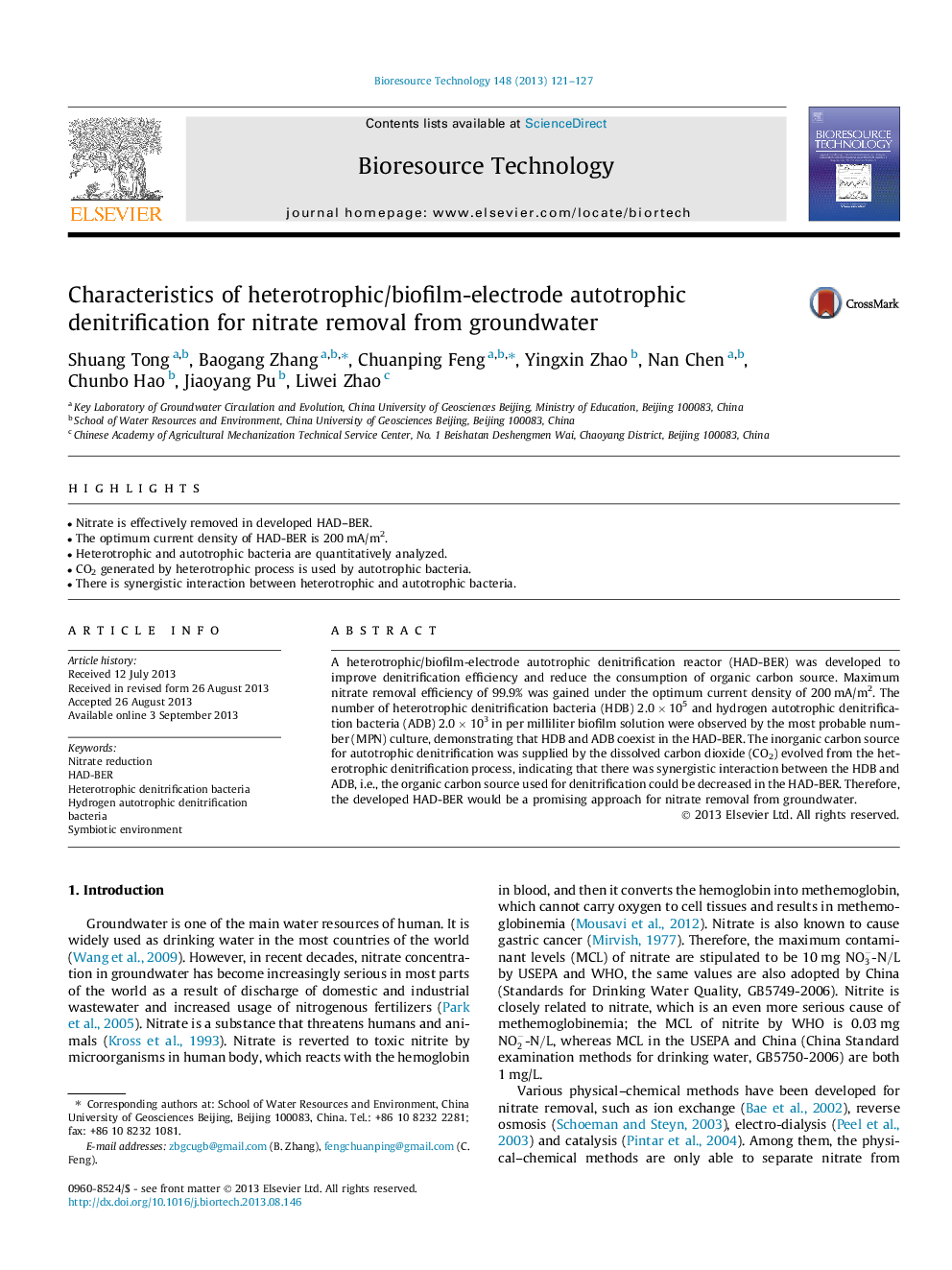| Article ID | Journal | Published Year | Pages | File Type |
|---|---|---|---|---|
| 7079815 | Bioresource Technology | 2013 | 7 Pages |
Abstract
A heterotrophic/biofilm-electrode autotrophic denitrification reactor (HAD-BER) was developed to improve denitrification efficiency and reduce the consumption of organic carbon source. Maximum nitrate removal efficiency of 99.9% was gained under the optimum current density of 200Â mA/m2. The number of heterotrophic denitrification bacteria (HDB) 2.0Â ÃÂ 105 and hydrogen autotrophic denitrification bacteria (ADB) 2.0Â ÃÂ 103 in per milliliter biofilm solution were observed by the most probable number (MPN) culture, demonstrating that HDB and ADB coexist in the HAD-BER. The inorganic carbon source for autotrophic denitrification was supplied by the dissolved carbon dioxide (CO2) evolved from the heterotrophic denitrification process, indicating that there was synergistic interaction between the HDB and ADB, i.e., the organic carbon source used for denitrification could be decreased in the HAD-BER. Therefore, the developed HAD-BER would be a promising approach for nitrate removal from groundwater.
Keywords
Related Topics
Physical Sciences and Engineering
Chemical Engineering
Process Chemistry and Technology
Authors
Shuang Tong, Baogang Zhang, Chuanping Feng, Yingxin Zhao, Nan Chen, Chunbo Hao, Jiaoyang Pu, Liwei Zhao,
